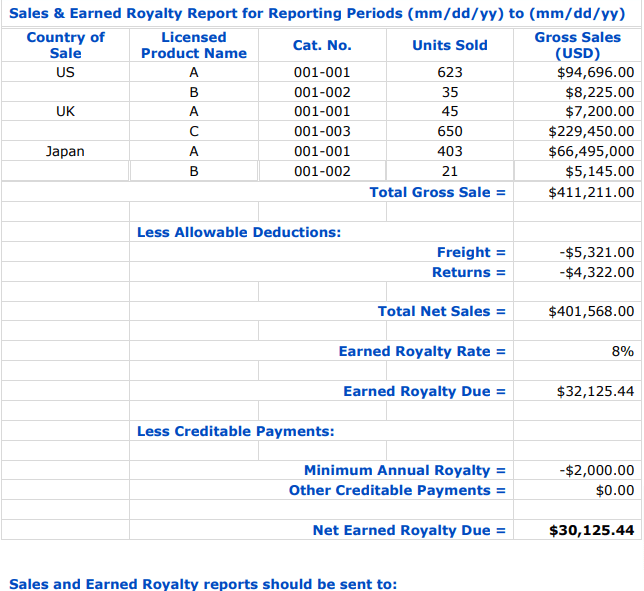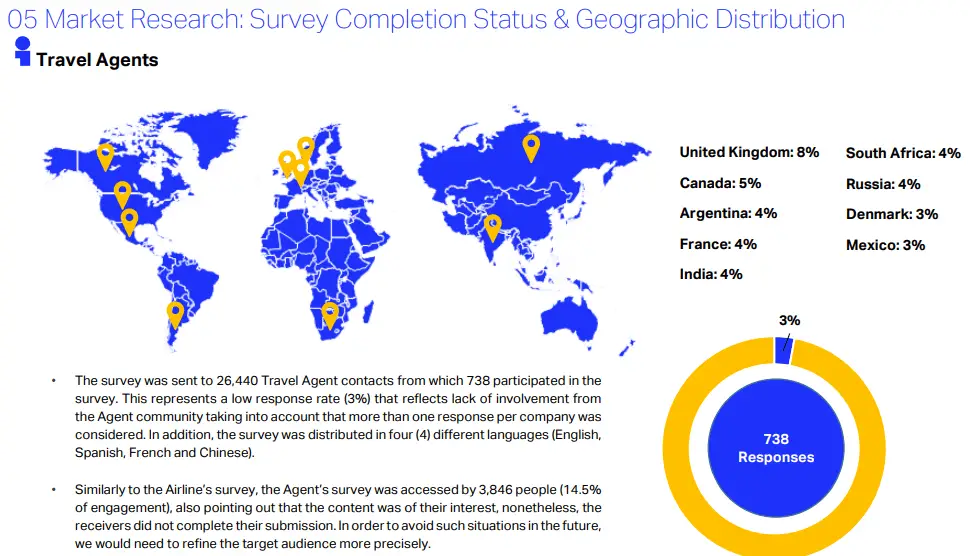Informational reports are powerful tools for effectively conveying knowledge and insights. They play a crucial role in research, analysis, and various domains where information distribution is key. In this blog, we’ll explore the definition, purpose, and functions of informational reports.
We’ll get deeper into the essential components that make up a well-crafted report and provide a structured approach to writing one. Along the way, we’ll showcase practical examples highlighting the diverse applications of informational reports.
Definition of an informational report
An informational report defines as “a document that provides factual information on a specific topic or issue, presenting data, findings, or summaries without extensive analysis or interpretation.”
Nelda Shelton and Maryann V. Piotrowski
What is an informational report
An informational report, also known as an information report, is a written document that provides factual details about a specific topic or subject. It aims to present information in a clear, concise, and organized manner to inform and educate readers. Informational reports are often used in various fields, such as business, education, and government, to convey research findings, summarize data, or provide updates on a particular subject.
The structure of an informational report typically includes an introduction that sets the context and outlines the purpose, followed by body paragraphs that present the main content sections with subheadings. Supporting evidence and examples are used to validate the information presented. A conclusion or summary wraps up the report by summarizing the main points and restating the significance of the topic.
To make an informational report effective, it should include relevant facts, statistics, and examples that support the main points being discussed. These elements provide evidence and lend credibility to the information being presented. Additionally, formal language and an appropriate tone are used to maintain professionalism throughout the report.
Purpose of an informational report
The purpose of an informational report is to convey information objectively, without personal opinions or biases. Informational reports rely on credible sources, such as research studies, surveys, or expert opinions, to support the presented information. They often incorporate visual aids, such as graphs, charts, or images, to enhance understanding.
What are the characteristics of an informational report?
Knowing the key characteristics of the informational report will provide valuable insights into how such reports are structured and the purpose they serve in conveying information.
1/ Clear and concise writing style: Clear and concise writing is a fundamental characteristic of an information report. It involves using simple and straightforward language to convey information effectively. Complex ideas are explained in a manner that is easy for the readers to understand, minimizing ambiguity or confusion.
2/ Objective and factual presentation of information: An information report should maintain objectivity by presenting information in an unbiased manner, avoiding personal opinions or subjective interpretations. It should rely on verifiable facts and data from reliable sources to support the information being presented.
3/ Use of headings and subheadings for the organization: To enhance the organization and structure of an information report, headings, and subheadings are used. They divide the content into logical sections and help readers navigate the report more easily. Each section should incorporate a clear and descriptive heading that precisely reflects its content.
4/ Inclusion of relevant facts, statistics, and examples: The inclusion of accurate and relevant facts, statistics, and examples is crucial in an information report. These elements support the main points being discussed, provide evidence, and help readers grasp the subject matter more effectively.
5/ Use of formal language and appropriate tone: Information reports should be written using a formal language style, using appropriate vocabulary and grammar. The tone of the report should be professional and objective, maintaining a level of formality that is suitable for the intended audience. It is important to avoid the use of slang or overly casual language.
Functions of an informational report
1/ Informing and educating: The primary function of an informational report is to provide readers with accurate and reliable information on a specific topic. It aims to educate the audience by presenting facts, data, and other relevant information in a clear and organized manner.
2/ Communicating complex information: Informational reports are effective in simplifying and communicating complex information. They break down complicated concepts or subjects into manageable sections, making the information more accessible and clear for readers.
3/ Supporting decision-making: Informational reports play a crucial role in supporting decision-making processes. They provide decision-makers with the necessary information and insights to make informed choices or take appropriate actions.
4/ Evaluating project feasibility: Informational reports can assess the feasibility of new projects or initiatives. They may examine factors such as market demand, financial viability, resource allocation, and potential risks to help decision-makers determine whether to proceed with a project.
Types of informational reports
Understanding different types of information reports is crucial for effectively communicating information, making informed decisions, and achieving organizational goals. These reports serve different purposes, catering to the needs of diverse audiences and addressing specific aspects of business operations, finance, and decision-making. Here are four of the most common types:
1/ Market Research Reports: Market research reports analyze market trends, consumer behavior, and competitor analysis. They provide insights into the market size, growth potential, customer preferences, and other factors influencing business decisions.
2/ Marketing Reports: Marketing reports examine shifts in market trends, customer behavior, and competitiveness in the market. They provide insights into target audiences, marketing strategies, campaign performance, and market segmentation.
3/ Sales Reports: Sales reports provide information about sales performance, revenue, and customer behavior. They may include metrics such as sales volume, conversion rates, customer acquisition costs, and sales forecasts.
4/ Annual Reports: Annual reports provide a comprehensive overview of a company’s performance, activities, and financial standing over the course of a year. They typically include financial statements, a message from the CEO, highlights of achievements, and future goals.
Related Reading: Types of Reports in Business
How to write an informational report
By following a systematic approach and employing key principles of organization and clarity, you can craft reports that inform, educate, and engage your audience. Here is a step-by-step process on how to write an informational report effectively.
1/ Define the Purpose and Scope: Clearly define the purpose of your report. What information do you want to convey? Identify the scope of your report and determine the key objectives you want to achieve.
2/ Conduct thorough research: Gather all the relevant information on the topic of your report. Make use of reliable sources, including academic journals, industry reports, and trustworthy websites.
3/ Plan and Organize: Create an outline or structure for your report. Determine the main sections, subtopics, and key points you want to cover. Enhance the organization and readability of your report by considering the inclusion of headings and subheadings.
4/ Write a Clear and Engaging Introduction: Begin your report with an engaging introduction that captures the reader’s attention while offering essential background information on the topic. Clearly articulate the report’s purpose and scope, while providing an overview of the subsequent sections to guide the reader’s expectations.
5/ Structure the Body: Organize the main body of your report into logical sections based on your outline. Each section should focus on a specific subtopic and provide sufficient details, explanations, and analysis.
6/ Maintain objectivity and present facts: In an informational report, it’s important to present information objectively and avoid personal biases or opinions. Use data visualization tools like graphs, charts, or tables, where appropriate, to present information in a visually appealing and easily understandable format.
7/ Provide a Clear Conclusion or Summary: In the conclusion, provide a summary of the main findings and key points discussed throughout the report. Restate the purpose and objectives, ensuring no new information is introduced at this stage.
8/ Revise and edit: Once you have finished the initial draft, take the time to thoroughly review and revise your report for clarity and accuracy. Pay close attention to grammatical mistakes, spelling, and any inconsistencies in the content. Trim unnecessary information or repetitive sections to keep the report focused.
9/ Proofread for accuracy: Ensure that all the facts, figures, and references in your report are accurate and properly cited. Verify the correctness of names, dates, and other details. Cross-check your sources to ensure accurate attribution and avoid plagiarism.
Structure of an informational report
In an informational report, the structure plays a vital role in organizing and presenting information effectively. The following section explains the structure of an information report:
1/ Title and introduction: The report begins with a title that accurately reflects the content and purpose of the report. Next, the introduction follows, offering an overview of the topic and establishing its significance. It may include background information, context, and the purpose of the report.
2/ Body Paragraphs: The body paragraphs form the main content of the report and are typically organized into sections and subheadings. The following components are commonly found within the body paragraphs:
3/ Definition and Background Information: In this section, the report provides a clear definition of the topic or subject matter under discussion. It may also provide relevant background information, such as historical context, key terms, or concepts that are necessary for understanding the report’s content.
4/ Main Content Sections with Subheadings: The body paragraphs are organized into multiple main sections, with each section dedicated to exploring a specific aspect or subtopic that is relevant to the main subject. These sections are often organized using subheadings to guide the reader through the report’s structure. Each subheading represents a distinct aspect of the topic and contains relevant information and analysis.
5/ Supporting evidence and examples: Within each section, supporting evidence and examples are provided to strengthen the points made. This may include data, statistics, research findings, case studies, or expert opinions. The evidence should be reliable and relevant to enhance the credibility and comprehensiveness of the report.
6/ Conclusion or Summary: In the conclusion or summary section, a concise summary of the main points discussed in the report is provided. It restates the purpose of the report, highlights the key findings, and may offer insights or recommendations based on the information presented.
7/ References or citations (if applicable): If external sources were used in the report, a reference or citation section should be included to acknowledge these sources and provide readers with the means to locate them. This section follows the appropriate citation format (e.g., APA, MLA) and includes all the necessary information to identify and retrieve the sources.
By following this structure, an informational report can present information in a clear and organized manner, guiding the reader through the report’s content and facilitating understanding and retention of the information provided.
Components of an informational report
A. Title and Introduction:
- Importance of a catchy and informative title: A well-crafted title grabs attention and accurately represents the content.
- Purpose of the introduction in setting the context: The introduction offers both an overview and background information to provide context.
B. Main Content Sections:
- Explanation of the topic: Clearly define the subject matter.
- Discussion of key points or subtopics: Explore specific aspects in detail.
- Presentation of relevant facts, statistics, or case studies: Support with credible evidence.
C. Supporting Evidence and Examples:
- Use of reliable sources and references: Draw from reputable sources, citing them appropriately.
- Incorporation of visual aids: Utilize graphs, charts, or images for clarity.
D. Conclusion or Summary:
- Recap of the main points: Summarize the key findings and arguments.
- Restatement of the purpose or significance of the topic: Emphasize the relevance and implications.
By incorporating these components, an information report presents information effectively and engages the reader.
Examples of an informational report
The following examples illustrate how information reports are used in different fields, such as business, academics, government, and scientific research, to inform decision-making, share knowledge, and guide policies and practices.
Business and Industry Reports:
Businesses and industries often rely on information reports to analyze market trends, financial performance, consumer behavior, and other relevant data. These reports may include sales reports, market research reports, feasibility studies, annual reports, or project progress reports. Information reports in this context help decision-makers make informed choices, identify opportunities for growth, and assess the effectiveness of strategies.
Further Reading: What is a business report
Academic and Research Reports:
In academic and research settings, information reports play a crucial role in presenting research findings, study results, or experimental data. Typically, these reports follow a structured format that includes an introduction, methodology, data analysis, and conclusion. Examples of academic and research reports can include scientific research papers, laboratory reports, or thesis papers. Information reports in academics help disseminate knowledge, contribute to the existing body of research, and enable peer review and critical evaluation.
Government and Policy Reports:
Government bodies and policy-making organizations rely on information reports to inform policy decisions and public initiatives. These reports often provide analysis, data, and recommendations related to specific issues or areas of concern. Examples of government and policy reports can include economic reports, environmental impact assessments, white papers, or policy briefs. Information reports in this context aim to provide objective information, evaluate the potential consequences of policies, and guide decision-making processes.
Scientific and Technical Reports:
Scientific and technical reports are essential in fields such as engineering, computer science, and environmental sciences. These reports often document research findings, experimental procedures, technical specifications, or project evaluations. Examples of scientific and technical reports can include research articles, engineering reports, clinical trial reports, or technical manuals. Information reports in these fields help disseminate scientific knowledge, share advancements and ensure the reproducibility of experiments.
Related Reading: Types of report writing with examples
Samples of information report
Sample 1.1, represent a country-wise sales information report including unit sold and gross sales for each country targeted.

Sample 2.2, represent a market research information report including survey responses from 26,440 Travel agent.

How do information reports and analytical reports differ
Seven key differences between an informational report and an analytical report:
Point of differentiation | Informational Report | Analytical Report |
Purpose | To present factual information or data. | To analyze and interpret information/data. |
Focus | Primarily on providing objective facts. | Emphasizes analysis, interpretation, and insights. |
Structure | Typically follows a straightforward structure: Introduction, Body, and Conclusion. | May follow a more complex structure, including sections like Executive Summary, Methodology, Findings, and Recommendations. |
Data Presentation | Presents information in a straightforward manner without much interpretation. | Analyzes and interprets data to draw conclusions or identify patterns/trends. |
Use of Evidence | Relies on reliable sources and data to support the presented information. | Uses evidence and data to support the analysis and conclusions made. |
Personal Opinion | Generally avoids personal opinions or subjective viewpoints. | May incorporate the author's opinion or interpretation to provide insights or recommendations. |
Action-oriented | May not provide specific recommendations or actions to be taken. | Often includes recommendations or suggestions based on the analysis conducted. |
Information report vs explanation report
Five key differences between an Information Report and an Explanation Report:
Point of differentiation | Information Report | Explanation Report |
Purpose | Presents factual information | Provides detailed explanations |
Focus | Objective and neutral | Analytical and explanatory |
Content Structure | Introduction, body, conclusion | Introduction, explanation, examples, conclusion |
Use of Evidence | Relies on data, facts, and research findings | Uses evidence and examples to support explanations |
Reader Engagement | Emphasizes clarity and concise presentation of information | Seeks to engage and educate the reader through detailed explanations |
Tips for Writing an effective informational report
1/ Conduct thorough research and gather reliable sources:
To create a credible information report, it is crucial to conduct thorough research on the topic. As discussed earlier this involves sourcing information from reputable and reliable sources such as academic journals, books, well-regarded websites, or reliable databases. By ensuring the accuracy and reliability of the sources, you can provide trustworthy information in your report.
2/ Organize information logically and coherently:
Organizing the information in your report is essential for clarity and comprehension. Begin by crafting an introduction that offers background information and presents a clear statement of purpose. Then, structure the body of the report in a logical and coherent manner, presenting the information in a well-organized sequence. This can be done chronologically or by importance. Finally, provide a concise summary or conclusion that ties together the main points of the report.
3/ Use clear and concise language:
Using clear and concise language is vital in an information report. Avoid jargon, technical terms, or overly complex language that may confuse readers. Instead, strive for simplicity and clarity. Use short sentences, active voice, and precise terminology to convey information effectively. Furthermore, consider the understanding level of your intended audience and adjust the language accordingly.
4/ Proofread and edit for accuracy and clarity:
Proofreading and editing are essential steps to ensure the accuracy and clarity of your information report. Review the content to check for any factual errors, inconsistencies, or inaccuracies. Be attentive to grammar, spelling, punctuation, and sentence structure to ensure readability. Reading the report aloud or seeking feedback from someone else can be beneficial in identifying areas that require improvement in terms of clarity and overall quality.
By following these tips, you can enhance the quality and effectiveness of your information report, making it more informative, coherent, and engaging for your readers.
Frequently Asked Questions
Q1) What are examples of informational reports?
Ans: Informational reports examples include market research reports, financial reports, scientific research reports, incident or accident reports, project status reports, etc. Each serves a specific purpose within its respective domain, providing valuable information and analysis.
Q2) What are informational and analytical reports?
Ans: Informational reports focus on presenting factual information without extensive analysis. On the other hand analytical reports go beyond presenting information and involve in-depth analysis, interpretation, and evaluation of data.
Q3) What are the 4 types of reports?
Ans: There are four common types of reports: informational reports, analytical reports, research reports, and progress reports. Each type serves a specific purpose and has its own structure and format.
Q4) What is the information report system?
Ans: The information report system is a structured process for generating, analyzing, and sharing information through reports. It involves steps like defining the report’s purpose, conducting research, organizing information, analyzing data, and presenting findings.
Q5) Is the information report formal or informal?
Ans: The information report is typically formal, presenting objective and factual information in a structured and professional manner. It uses formal language, follows a specific structure, and is commonly used in academic, scientific, business, or government contexts.
Related Reading: The Basic difference between formal and informal report
Q6) What is an informational formal report?
Ans: An informational formal report is a structured and professional document that presents factual information on a specific topic. Its objective is to offer clear and concise information without getting into extensive analysis.



